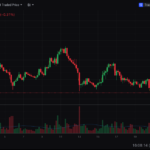Bitcoin has seen remarkable growth in 2024, hitting a new all-time high of $92,500 and climbing 112% year-to-date. The overall crypto market cap also reached an unprecedented $3.23 trillion on November 18. Historically, Bitcoin has shown high correlation with U.S. stocks, often moving in tandem with major indices like the Nasdaq Composite. However, recent data suggests that this connection is weakening. The current 30-day correlation between Bitcoin and U.S. equities stands at 0.46, one of the lowest levels observed in the past five years.
Diverging Paths Since the Election
During 2021 and 2022, Bitcoin and the Nasdaq often mirrored each other’s movements, reflecting broader market trends. This correlation continued into early 2024 when BTC hit $73,000 in March. But since Donald Trump’s presidential win on November 5, Bitcoin has surged significantly, while the Nasdaq has entered a stagnation phase, falling 4% from its peak. By contrast, Bitcoin is just 1.5% shy of its record high.
Data from Investing.com reveals that in 2024, Bitcoin futures on the CME and the Nasdaq index moved in the same direction only 52% of trading days. James Van Straten, an analyst from Cointelegraph, notes that Bitcoin is maturing as an asset class, now ranking as the seventh-largest by market cap. As investors become more familiar with BTC, it is expected to trade more independently from traditional assets.
Shifting Correlations with Ethereum and Gold
The correlation between Bitcoin and Ethereum is also diminishing. While the two digital assets have historically maintained a near-perfect correlation (1.0), recent trends show divergence. The current 30-day correlation between BTC and ETH is now 0.35, the second-lowest in recorded history. Van Straten suggests that BTC and ETH will likely continue to decouple over time as they evolve differently within the crypto ecosystem.
Similarly, Bitcoin’s correlation with gold has dropped to its lowest point since December last year, signaling a shift in investor sentiment. Analysts believe Bitcoin is increasingly viewed as an alternative to gold for inflation hedging, solidifying its place as a standalone asset class.
Conclusion
The data points to a broader trend: Bitcoin is maturing and becoming less dependent on traditional financial markets and correlated assets. This decoupling may signal a new phase where Bitcoin trades more autonomously, reflecting its unique value proposition in the global financial landscape.







